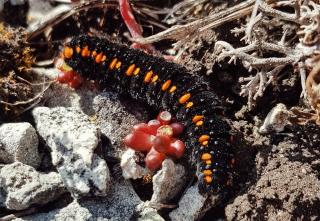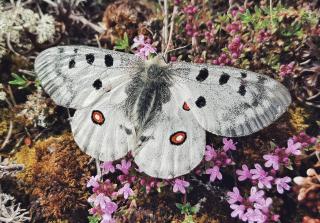Background & aim
Background

In Europe, semi-natural grasslands are known for their importance to biodiversity. However, change in land-use, such as intensified agriculture and land abandonment, has led to fragmentation and loss of these habitats. This in turn has led to a loss of biodiversity and one group of taxa that has suffered a major decline are the pollinating insects, such as butterflies. It is estimated that approximately a third of Europe’s butterfly species are suffering from decreasing populations and as many as half the species occur on semi-natural grasslands.
This ongoing loss of biodiversity calls for action, such as appropriate and sustainable habitat management, aimed to preserve and protect biodiversity. Habitat management implemented to preserve a species should be based on species specific needs. Hence, assessing a species habitat preference is crucial to its preservation.
The Apollo butterfly is an example of a grassland butterfly who is currently suffering from decreasing populations, and local extinction, all over its distribution area in Europe. In Sweden it is found in small, local populations on the mainland, as well as on the island of Gotland where the population is reported to be both large and viable. Although there are some previous studies on the habitat preferences of the Apollo butterfly, much is still unknown. A fact even more evident when referring to the Gotland population who has not yet been studied in this regard.
Aim

The aim of the study was to assess the habitat preference of the Apollo butterfly on the island of Gotland in order to identify ecological key factors that determine habitat quality. To reach this aim, the study intended to answer three questions:
1. What are the habitat preferences of the Apollo butterfly in its different life stages?
2. What impact does current grazing regimes in the study site have on larval and adult density?
3. Are adult butterflies selective in their choice of nectar plants?
Responsible for this page:
Director of undergraduate studies Biology
Last updated:
05/12/21
